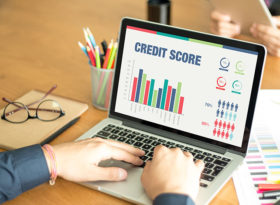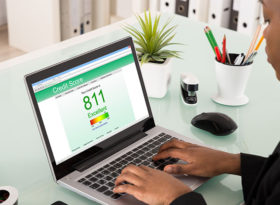 Short Term Loans
Short Term Loans
How do credit cards work?
Credit cards are powerful financial tools that offer convenience and flexibility when used responsibly. However, understanding how to use a credit card responsibly is crucial for maintaining good financial health.
In this article, we’ll explore essential topics such as how credit cards function and how to use them effectively, including an overview of fees, repayment options, and interest rates. We’ll also discuss alternative financial solutions, highlighting Credit24’s small loans and credit lines as a viable option for those looking to manage their finances more efficiently.
What is a credit card?
A credit card is a financial product that allows you to borrow funds from a bank or financial institution up to a certain credit card limit. This limit is based on factors such as your income, expenses and creditworthiness. You can use the card to make purchases or pay a bill, and the repayments are generally due each billing cycle.
The main difference between a debit card and a credit card is that a debit card uses your own money, directly withdrawing from your bank account, while a credit card allows you to borrow money, which must be repaid. If you don’t pay off the balance in full by the due date, interest is usually charged. Unlike loans, which offer a lump sum with fixed repayment terms, credit cards provide revolving credit, meaning you can borrow up to a certain limit and repay over time.
Credit cards also help in building credit history, which is beneficial for when you want to borrow larger amounts in the future for purchases such as a car or a home. Understanding the credit card meaning and its definition is essential for managing your finances effectively.
How do credit cards work in Australia?
In Australia, credit cards operate similarly to those in other countries but come with specific features tailored to the Australian financial landscape. When you apply for a credit card, the issuer assesses your financial situation, including income, credit score, and existing debts, to determine your eligibility and credit card limit.
If approved, you can make purchases up to your credit limit. The card issuer sends a monthly statement detailing your transactions, the total amount owed, and the minimum repayment required. It’s important to understand how credit card repayments work to avoid unnecessary interest charges and fees.
Credit card billing cycles
Understanding the billing cycle is crucial for managing credit card payments. A billing cycle typically lasts between 28 and 31 days, depending on your credit card agreement. At the end of each cycle, you’ll receive a statement outlining your purchases, interest charges, and the total amount owed. Paying off your balance in full within this period helps you avoid interest charges, taking full advantage of any interest-free periods.
Credit card interest-free period
Many Australian credit cards come with a grace period, the time between the end of your billing cycle and your payment due date. During this period, you can pay off your balance without incurring interest. However, this benefit usually applies only if you pay off your balance in full each month. Understanding how interest works on credit cards is vital, especially if you carry a balance, as interest charges will accumulate from the purchase date.
How interest rates work on credit card?
In Australia, interest on credit cards is typically calculated based on the Annual Percentage Rate (APR). This rate applies if you carry a balance from one month to the next. For example, with an APR of 16%, the daily rate would be approximately 0.044%. If you owe $1,000, the daily interest would be $0.44, accumulating until the balance is paid off. It’s crucial to understand how credit cards work and how interest works on credit cards to avoid debt accumulation.
What’s the credit limit of the credit card?
A credit card’s limit is the maximum amount you can borrow. This limit is determined based on factors such as your income, credit score, and existing debts. Credit card limits can vary widely, from a few hundred dollars to several thousand, depending on the issuer’s assessment of your financial situation.
Staying within your limit and making timely credit card payments is crucial for maintaining a good credit score. Exceeding your limit or missing payments can result in fees and negatively impact your credit score.
Credit card repayments
Your bank sends a monthly credit card statement that outlines the minimum payment amount due. The minimum repayment is the smallest amount you must pay to meet your credit agreement, but paying only the minimum can be costly in the long run. The longer you carry credit card debt, the more interest you’ll pay, benefiting your bank.
By paying the minimum amount by the due date, you’ll avoid late fees but still incur interest on the remaining balance. Minimum repayments vary by credit card provider and depend on your outstanding balance.
Credit cards fees
Credit card fees vary depending on the type of credit card. Common fees include annual fees, late payment fees, cash advance fees, and foreign transaction fees. The exact fees depend on your card type and issuer, so it’s crucial to review the terms and conditions before applying. Understanding how credit cards work includes being aware of these fees and how they might affect your overall costs.
Types of credit card in Australia
Australia offers a wide range of credit cards, each designed to meet different needs. Here’s a brief overview of the types of credit cards available in Australia:
Rewards credit cards
These cards offer benefits like travel rewards, frequent flyer points, and cashback. Subtypes include:
- Travel rewards credit cards: Earn points on travel-related purchases.
- Frequent flyer credit cards: Accumulate airline miles.
- Premium rewards credit cards: Offer exclusive perks but often come with higher fees.
- Store credit cards: Provide discounts or rewards for purchases at specific retailers.
- Cashback credit cards: Return a percentage of your spending as cash.
- Rewards credit cards can be highly beneficial for frequent travelers or those who spend a lot on certain categories like groceries or fuel. However, they often come with higher interest rates and annual fees, so it’s important to weigh the potential rewards against the costs.
Low-interest and balance transfer credit cards
- Low-interest credit cards: These cards have lower ongoing interest rates, making them ideal for carrying a balance.
- No-interest, flat-fee credit cards: Charge a fixed monthly fee instead of interest.
- Balance transfer credit cards: Allow you to transfer existing debt to a new card with a lower interest rate, often at 0% for an introductory period.
- Balance transfer credit cards can be a useful tool for consolidating debt and reducing interest payments. However, it’s important to be aware of any balance transfer fees and the duration of the introductory period, after which the interest rate may increase significantly.
Credit building credit cards
- Student credit cards: Designed for those new to credit, often with lower limits and fewer rewards.
- Zero/low-fee credit cards: Ideal for those looking to build credit without paying high fees.
- Credit building credit cards are a great option for those who are just starting their financial journey or need to repair their credit. These cards typically have lower credit limits and fewer perks, but they offer an opportunity to build a positive credit history.
Credit Card Pros & Cons
| Pros | Cons |
|---|---|
| Ease of use: Credit cards are convenient for everyday purchases, especially for online shopping and travel. | High interest rates: If balances are not paid in full, interest charges can accumulate quickly, leading to significant debt. |
| Rewards and cashback: Many cards offer rewards points, travel perks, and cashback on purchases, providing added value for frequent users. | Potential debt spiral: It’s easy to overspend, leading to a cycle of debt that’s difficult to break, especially with minimum payments. |
| Can boost credit score: Responsible use, such as timely payments and maintaining a low balance, can help improve your credit rating. | Fees: Credit cards can come with various fees, including annual fees, late payment fees, and foreign transaction fees, which can add up. |
| Fraud protection: Credit cards often come with built-in fraud protection, ensuring you’re not held liable for unauthorised charges. | Credit score impact: Missing payments or maxing out your credit limit can negatively affect your credit score. |
| Interest-free period: Some cards offer an interest-free period, allowing you to borrow money at no cost if the balance is paid in full each month. | Temptation to overspend: The availability of credit can encourage spending beyond your means, leading to financial strain. |
| Expense tracking: Monthly statements provide a clear record of your spending, helping with budgeting and financial planning. | Limited rewards value: The value of rewards or cashback may be offset by high fees or interest rates, making some cards less beneficial. |
Learn more about Credit24 line of credit
How to get a credit card
- Some accept online applications, some only in person at the branch
- Documents one usually needs
- You’ll be asked about the credit limit you want
- After that there’s a credit assessment form the provider
- Usually within a week to get a credit card
Managing Credit Card Debt
Credit card debt can quickly become overwhelming if not managed properly. One of the most effective strategies for managing credit card debt is the “debt avalanche” method, where you focus on paying off the card with the highest interest rate first while making minimum payments on others. Alternatively, the “debt snowball” method involves paying off the smallest balance first, providing psychological motivation as you eliminate debts.
It’s also worth considering balance transfer cards, which allow you to move your debt to a 0% interest for a limited period can be a useful strategy. Additionally, consider setting up automatic payments to ensure you never miss a payment. You can also contact your credit card issuer to negotiate a lower interest rate or payment plan if you’re struggling with repayments.
It’s essential to avoid only making minimum payments, as this can lead to a debt spiral where interest charges quickly outweigh your ability to repay. By proactively managing your debt and seeking help when needed, you can regain control of your finances.
To fully understand how to manage a credit card effectively, it’s crucial to have all the credit card information at your disposal, including the terms, interest rates, and fees associated with the card.
Credit Cards vs. Other Financial Products
While credit cards are convenient, they aren’t always the best choice for every financial situation. For instance, if you need a large sum of money for a specific purpose, a personal loan might be more suitable due to its lower interest rates and structured repayment plan. On the other hand, if you need quick access to funds with the flexibility to repay over time, a line of credit like the one offered by Credit24 could be a better option.
Personal Loans: These loans provide a lump sum that you repay over a fixed term with a set interest rate. Personal loans are ideal for large purchases or debt consolidation because they typically offer lower interest rates than credit cards.
Buy Now, Pay Later Services: These services allow you to make purchases and pay them off in installments, often without interest if payments are made on time. While convenient, they can encourage overspending and lead to financial difficulties if not used responsibly.
Credit24 Line of Credit: Credit24 offers a flexible line of credit with a virtual account limit of up to $10,000. This option provides an excellent alternative to traditional credit cards, especially for those who prefer a more transparent fee structure and lower interest rates.
Benefits of Credit24 Line of Credit:
- Apply online in under 10 minutes and get approval in 60 seconds*
- Virtual credit account with limits from $500 to $10,000
- No account fees – $0 setup, $0 account keeping, and $0 withdrawal fees
- Pay for what you use, with interest charged monthly on the amount owing
- Flexible repayment terms, up to 36 months, with no early payment fees
Disclaimer:
IPF Digital Australia Pty Ltd, trading as Credit24, ABN 59 130 894 405. Australian Credit Licence 422839. The information in this article is of general nature and does not take into consideration your objectives, financial situation or needs. Lending criteria, fees and charges apply. For more information about our products, eligibility criteria and terms and conditions, please visit www.credit24.com.au.




